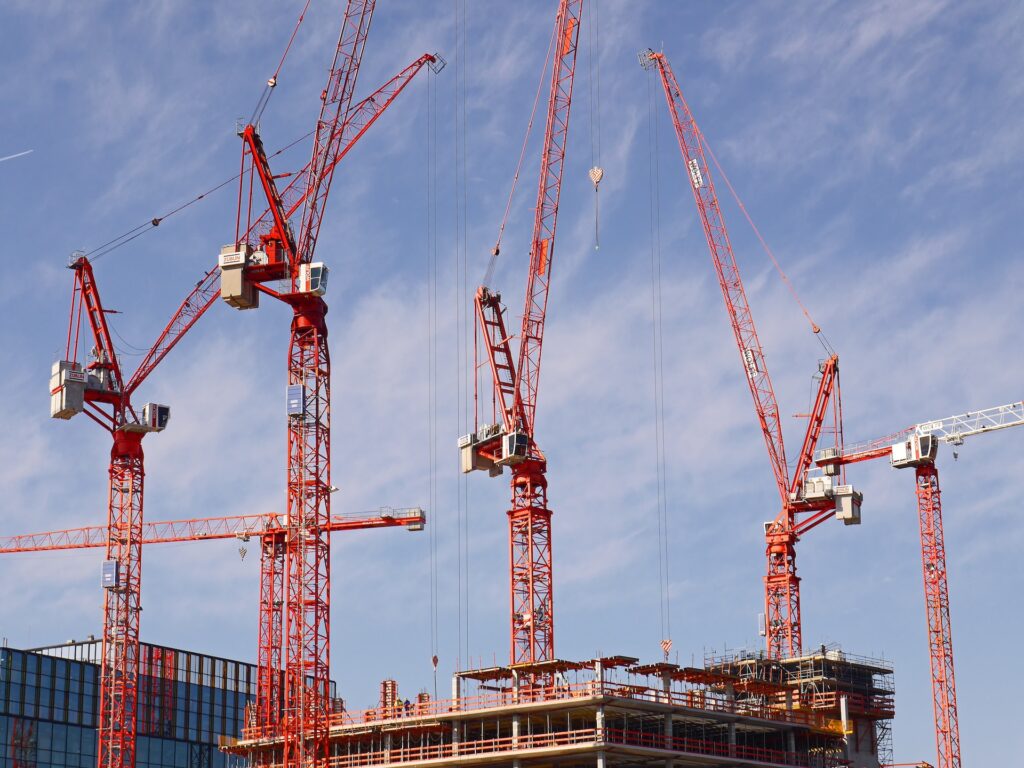Introduction to Overhead Cranes
Overhead cranes, also known as bridge cranes, are a type of crane found in industrial environments. These cranes are characterised by their unique design, where the crane’s bridge moves along elevated tracks. This design allows for efficient, high-capacity lifting and movement of heavy materials within a confined space. Overhead cranes are essential in various industries, including manufacturing, warehousing, and shipping, due to their ability to handle heavy loads with precision and safety.
History and Evolution
The history of overhead cranes dates back to the industrial revolution when the need for rapid movement of heavy materials became crucial. Initially, these cranes were manually operated and were less sophisticated. However, with technological advancements, modern overhead cranes have evolved significantly. They now feature advanced mechanisms like electric motors, computerised controls, and safety devices, making them more efficient and safer to operate.
Types of Overhead Cranes
Single Girder Cranes
Single girder cranes consist of one main beam and are typically used for lighter loads and shorter spans. They are known for their cost-effectiveness and simplicity in design and operation.
Double Girder Cranes
Double girder cranes have two main beams and are used for heavier loads and longer spans. They offer better hook height and are more robust and stable compared to single girder cranes.
Gantry Cranes
Gantry cranes are a variation of the overhead crane, where the bridge is supported by legs that run on ground-level tracks. They are ideal for outdoor applications or where building support structures are not available.
Jib Cranes
Jib cranes are another variation, featuring a horizontal arm (jib) attached to a movable hoist. They are used for lifting materials in a circular area and are common in workshops and warehouses.
Components and Mechanisms
Hoist
The hoist is the primary lifting component of an overhead crane. It can be either wire rope or chain type, depending on the application and load requirements.
Bridge
The bridge is the load-bearing structure that spans the width of the crane. It houses the hoist and trolley and moves along the runway beams.
Trolley
The trolley carries the hoist across the bridge, allowing for lateral movement of the load.
Runway
The runway consists of tracks, beams, and support columns on which the crane operates. It defines the crane’s working area and is crucial for its stability and smooth operation.
Control Systems
Modern overhead cranes are equipped with sophisticated control systems, including remote controls, automated systems, and safety features like overload sensors and emergency stops.
Applications of Overhead Cranes
Overhead cranes are versatile and find applications in various sectors. In manufacturing, they are used for assembling heavy equipment, moving raw materials, and handling finished products. In the shipping industry, they are essential for loading and unloading cargo. They are also used in the construction of large structures, such as bridges and skyscrapers, where they lift and place heavy steel beams and other materials.
Safety Considerations
Safety is paramount when operating overhead cranes. Operators must be well-trained and familiar with the crane’s controls and safety features. Regular maintenance and inspections are crucial to ensure the crane’s integrity and prevent accidents. Safety protocols, such as load limits and operational guidelines, must be strictly followed to ensure a safe working environment.
Future Trends and Developments
The future of overhead cranes looks promising with the integration of advanced technologies. Automation and AI are set to make cranes more efficient and safer. The use of sensors and real-time data analysis can predict maintenance needs and prevent breakdowns. Additionally, the trend towards eco-friendly operations is leading to the development of energy-efficient models and the use of sustainable materials in crane construction.
Conclusion
Overhead cranes play a critical role in modern industry, offering efficient and safe handling of heavy materials. Their evolution from simple manual systems to sophisticated, automated machines reflects the advancements in technology and the growing demands of various industries. As they continue to evolve, overhead cranes will remain an indispensable tool in the industrial world, driving efficiency, safety, and productivity.

